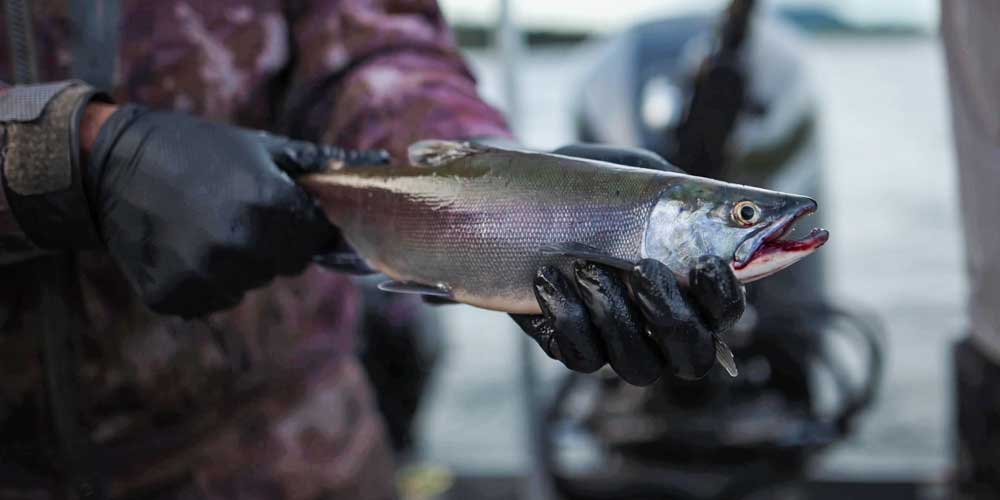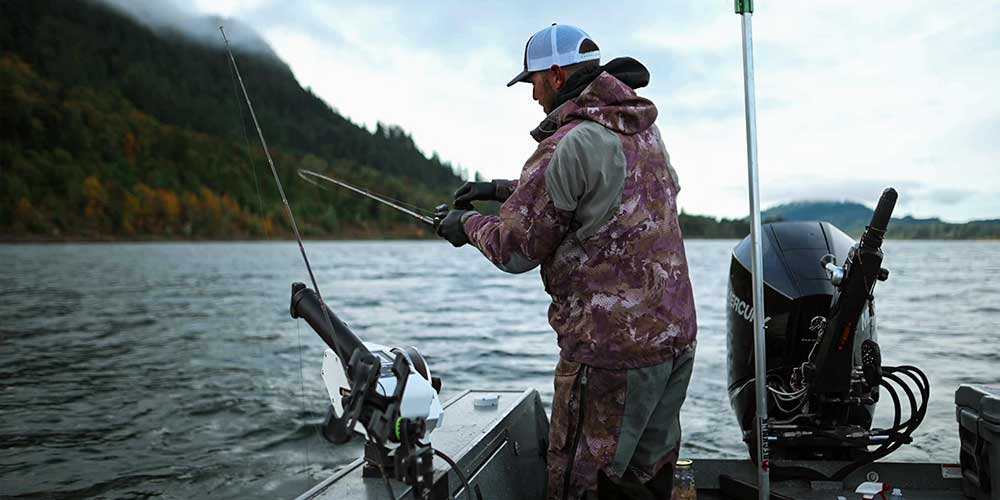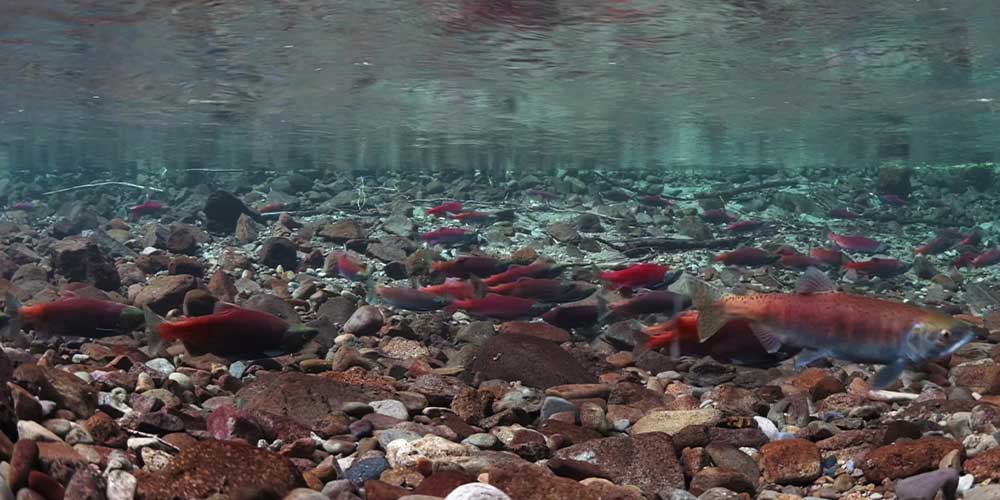Kokanee Salmon: How to find, catch and cook
Called the "little salmon that could", Kokanee salmon are sometimes forgotten about amidst the countless other fish species available to Pacific Northwest anglers, like the ever-popular steelhead and sockeye salmon.
Still, there are hardcore groups of anglers who target this landlocked, freshwater subspecies of the sockeye salmon. Great fighters and excellent table fare, biologically speaking, Kokanee salmon are also a beautiful, evolutionary wonder.
What is a Kokanee Salmon?

Also known as the Kokanee trout, little redfish, silver trout, kikanning, Kennerly's salmon, Kennerly's trout, and Walla, the Kokanee salmon is a relative of the sockeye salmon, but is geographically isolated in freshwater lakes so they do not migrate to the ocean.
A diminutive version of the sockeye, Kokanee grow to a maximum of six pounds or so; most fish run smaller in the 10- to 15-inch class.
Where Can You Find Kokanee Salmon
Kokanee salmon are found throughout the Pacific Northwest in the United States and Canada, including Alaska, California, Idaho, Oregon, Washington, and British Columbia. The species has also been introduced to waters in Montana, Wyoming, Nevada, Utah, Colorado, Arizona, New Mexico as well as New York and North Carolina. Across the border north, they've been introduced into waters in Alberta and Saskatchewan.

Most anglers search out Kokanee Salmon in freshwater lakes by locating the thermocline in deeper waters where the temperature hovers around 50 degrees, which is optimal for the fish.
Flaming Gorge Reservoir in Utah and Wyoming is renowned for its Kokanee fishing opportunities. There, the fish are plentiful and grow quite large, drawing anglers from all over the country.
Other excellent Kokanee salmon fisheries include:
- Lake Berryessa in California
- Wallowa Lake, Oregon
- Lake Roosevelt, Washington
- Blue Mesa Reservoir, Colorado
- Kalamalka Lake, British Columbia, Canada
- Merwin Reservoir, Washington
- Lake Coeur d'Alene, Idaho
- Deep Lake, Washington
How to Catch Kokanee Salmon
As mentioned, Kokanee salmon prefer cooler, deep waters, typically schooling around the thermocline where water temperatures are stable and around 50 degrees. To reach these fish, anglers either have to use heavier baits, sinkers, and rigs, or employ downriggers to consistently put their baits in front of the fish. Enter Cannon downriggers...
"The biggest advantage to using Cannon downriggers is depth control," notes veteran Kokanee salmon guide, Cameron Black of Gone Catchin' Guide Service and Addictive Fishing, "to a Kokanee angler, that's everything."
"Speed is also controlled with a Cannon downrigger. If the fish are 80 or more feet down it takes a really long time to let out a weight and dodger manually and you never really know if your bait is in front of the fish. With the combination of Humminbird electronics to find the fish and Cannon downriggers to place our baits effectively, the system is vastly improved and we catch a lot more fish. That's huge to my clients." added Cameron.
Popular Kokanee Salmon Bait / Lures

Kokanee salmon anglers can use a variety of presentations to chase their quarry. What most lures have in common is flash, UV or glow finishes, and often added scent to draw aggressive reaction strikes from the fish, which normally comb microscopic organisms through specially-adapted gill rakers.
Spinner rigs, spoons, and dodgers are all effective baits, but are normally connected to a heavier fluorocarbon leader to prevent bite-offs from the toothy critters. Although some anglers chase Kokanee salmon during their spawning run with fly fishing gear, the most effective way to catch kokanee salmon is by trolling. Schooling fish are located with electronics like Humminbird HELIX or SOLIX units, and trolling paths are created to maximize the time the lure spends in front of the fish at the correct depth.
What do Kokanee salmon eat?
Kokanee salmon have rakers in their gills evolutionarily-adapted to filter out zooplankton, including microscopic vegetative matter, insects, and freshwater shrimp. They do not feed on larger forage like minnows, which can make fishing for them difficult. What anglers are doing is creating a reaction strike-agitating the fish so they strike the presented lure out of sheer instinct to kill the nuisance.
Kokanee Salmon Spawning Rituals

Kokanee are silver-colored most of their lifespan. They reach maturity at 3- to 5 years old and are ready to spawn, a time signified by their sides turning bright red with a black head. Males of the species develop a hump in their back.
Kokanee run up creeks, small rivers, and also spawn in deeper, cool waters. Following the spawn, both males and females die. They become easy fodder for eagles, bears, and other animals. The life cycle continues year after year...
Are Kokanee salmon good to eat?
With succulent red flesh like the anadromous sockeye salmon, the Kokanee's smaller size lends itself to how you'd prepare keeper-size rainbow, brown, or brook trout. That means pan frying in butter, fresh herbs, lemon, and garlic, or wrapping up in tin foil with the aforementioned and cooking over an open fire. They are also excellent grilled.
One difference, though-you get the taste and appearance of salmon.
The Best Smoked Kokanee Recipe
Another popular way to prepare Kokanee salmon is smoking them. The fish are first gutted, de-gilled, and lightly scraped free of their fine, glitter-like scales, and it's optional to leave or remove their heads.
Make a brine of water, sugar, brown sugar, salt, garlic powder, and black pepper. Use a large container or two-gallon Zip-Lok bag and combine the fish and brine. Refrigerate for 12 hours. Then prepare your smoker with the wood of choice and bring up to 200-degrees.
Rinse and dry the fish off and they're ready for the smoker. Smoking times may vary; it's best to bring the fish up to an internal temperature of 145-degrees. After smoking, allow the fish to cool and then refrigerate or freeze.






